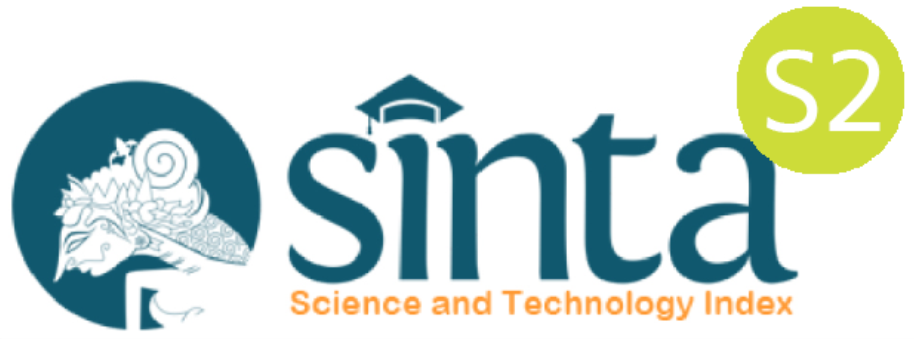KETERAMPILAN BERPIKIR KREATIF SISWA DALAM MENYELESAIKAN SOAL OLIMPIADE MATEMATIKA BERDASARKAN LEVEL METAKOGNISI
DOI:
https://doi.org/10.35316/alifmatika.2019.v1i1.1-14Keywords:
creative thinking, skills, mathematics Olympiad, metacognition.Abstract
The research aims to describe the level of creative thinking ability of students in solving mathematics olympiad problems based on students' metacognition levels by using the qualitative descriptive approach. The subjects of this study were the students at State of Junior High School (SMPN) 2 Jember involving the learning of Olympiad mathematics. The data collection was carried out based on the student's creative thinking ability test sheets, interviews, and observations. Test questions given to the students were mathematics olympiad questions. The analysis of the Miles and Huberman models were used for data analysis. The results exhibited that the level of creative thinking skills of the students in solving mathematics Olympiad questions were 29.41% (less creative), 41.18% (quite creative), 11.76% (creative) and 17.65% (very creative). On the other hand, the metacognitive level of SMPN 2 Jember students were 64.71% at level 2 (aware use), 23.53% at level 3 (strategic use) and 11.76% at level 4 (reflective use). In addition, the literatures indicate that there are several factors affectting the creative thinking skills and metacognition level, among them is an understanding of the information of the problem, compiling an appropriate strategies, skills of the chosen strategy, skills of answer elaboration, mastery of the Mathematics Olympiad material and a tendency to rely on the memorization or imitations based on previous or discussed solutions.
Downloads
References
Alkadrie, R. P., Mirza, A., & Hamdani. (2015). Faktor-Faktor yang Mempengaruhi Level Metakognisi dalam Pemecahan Masalah Pertidaksamaan Kuadrat di SMA. Jurnal Pendidikan Dan Pembelajaran Untan.
As’ari, A. R., Tohir, M., Valentino, E., Imron, Z., & Taufiq, I. (2017). Buku Guru Matematika (Revisi). Jakarta: Pusat Kurikulum dan Perbukuan, Balitbang, Kemendikbud.
Coutinho, S. A. (2007). The Relationship Between Goals, Metacognition, and Academic Success. Educate~, 7(1), 39–47.
Defitriani, E. (2014). Profil Berpikir Kreatif Siswa Kelas Akselerasi dalam Memecahkan Masalah Matematika Terbuka. Jurnal Ilmiah Matematika Dan Pendidikan Matematika, 6(2), 65–76.
Gartmann, S., & Freiberg, M. (1995). Metacognition and Mathematical Problem Solving: Helping Students to Ask the Right Questions. Metacognition and Mathematical Problem Solving: Helping Students to Ask the Right Questions, 6(1).
Gie, T. L. (2003). Tehnik Berpikir Kreatif. Yogyakarta: Sabda Persada Yogyakarta.
Kholid M. N.; Lestari, N. P. (2019). Metakognitif Siswa dalam Menyelesaikan Soal Matematika Berbasis PISA pada Konten Change and Relationship. Universitas Muhamadiyah Surakarta, (1), 121.
Munandar, U. (2012). Pengembangan Kreativitas Anak Berbakat. Jakarta: Rineka Cipta.
Murti, H. A. S. (2011). Metakognisis dan Theory of Mind (ToM). Jurnal Psikologi Pitutur, 1(2), 53–64. https://doi.org/10.1080/01426391003746549
P21. (2014). Learning for the 21st Century: A Report and MILE Guide for. Retrieved from http://www.21stcenturyskills.org
Rahmawati, N. T. (2016). Kemampuan Berpikir Kreatif Matematik Siswa pada Pembelajaran SSCS dengan Tinjauan Metakognisi. PRISMA, Prosiding Seminar Nasional Matematika, (2), 150–160.
Romli, M. (2012). Strategi Membangun Metakognisi Siswa SMS dalam Pemecahan Masalah Matematika. Aksioma: Jurnal Matematika Dan Pendidikan Matematika UPGRIS Semarang, 1(2).
Sari, A. P., Ikhsan, M., & Saminan, S. (2017). Proses Berpikir Kreatif Siswa dalam Memecahkan Masalah Matematika Berdasarkan Model Wallas. Beta Jurnal Tadris Matematika, 10(1), 18–32. https://doi.org/10.20414/betajtm.v10i1.102
Siswono. (2008). Model Pembelajaran Matematika Berbasis Pengajuan dan Pemecahan Masalah untuk Meningkatkan Kemampuan Berpikir Kreatif. Surabaya: Unesa University Press.
Sophianingtyas, F., & Sugiarto, B. (2013). Identifikasi Level Metakognitif Siswa dalam Memecahkan Masalah Materi Perhitungan Kimia. UNESA Journal of Chemical Education, 2(1), 21–27.
Sugiyono. (2017). Metode Penelitian Kuantitatif, Kualitatif dan R&D. Bandung: Alfabeta.
Syaiful. (2011). Metakognisi Siswa dalam Pembelajaran Matematika Realistik di Sekolah Menengah Pertama. Jurnal Edumatica, 1(2), 1–13.
Tohir, M., Abidin, Z., Dafik, D., & Hobri, H. (2018). Students Creative Thinking Skills in Solving Two Dimensional Arithmetic Series Through Research-Based Learning. Journal of Physics: Conference Series, 1008(1), 012072. https://doi.org/10.1088/1742-6596/1008/1/012072
Tohir, Mohammad. (2017). Pengembangan Bahan Ajar Olimpiade Matematika Berdasarkan Model Pemecahan Masalah untuk Meningkatkan Kemampuan Penalaran Matematis Siswa. In Tesis. Magister Pendidikan Matematika Universitas Jember. https://doi.org/10.13140/RG.2.2.31121.79200
Tohir, Mohammad. (2019). Peningkatan Kompetensi Guru Pembina Olimpiade Matematika Siswa Sekolah Menengah Pertama Kabupaten Madiun. As-Sidanah: Jurnal Pengabdian Masyarakat, 1(2), 199–226. https://doi.org/10.35316/assidanah.v1i2.587
Tohir, Mohammad, Susanto, Hobri, Suharto, & Dafik. (2018). Students’ Creative Thinking Skills in Solving Mathematics Olympiad Problems Based on Problem-Solving Polya and Krulik-Rudnick Model. Advanced Science Letters, 24(11), 8361–8364. https://doi.org/10.1166/asl.2018.12563
Wulantina, E. . K. T. A. . R. (2015). Proses Berpikir Kreatif Siswa dalam Pemecahan Masalah Matematika Ditinjau dari Kemampuan Matematika pada Siswa Kelas X MIA SMAN 6 Surakarta. Jurnal Elektronik Pembelajaran Matematika, 3(6), 671–682.
Downloads
Published
How to Cite
Issue
Section
License
COPYRIGHT NOTICE
Author (s) who publish in Alifmatika: Jurnal Pendidikan dan Pembelajaran Matematika agree to the following terms:
- The Author (s) submitting a manuscript do so on the understanding that if accepted for publication, copyright of the article shall be assigned to Alifmatika: Jurnal Pendidikan dan Pembelajaran Matematika, Tarbiyah Faculty of Ibrahimy University as the publisher of the journal. Consecutively, author(s) still retain some rights to use and share their own published articles without written permission from Alifmatika: Jurnal Pendidikan dan Pembelajaran Matematika. This work is licensed under a Creative Commons Attribution-ShareAlike 4.0 International License.
- Copyright encompasses rights to publish and provide the manuscripts in all forms and media for the purpose of publication and dissemination, and the authority to enforce the rights in the manuscript, for example in the case of plagiarism or in copyright infringement.
- Alifmatika: Jurnal Pendidikan dan Pembelajaran Matematika and the Editors make every effort to ensure that no wrong or misleading data, opinions or statements be published in the journal. In any way, the contents of the articles and advertisements published in Alifmatika: Jurnal Pendidikan dan Pembelajaran Matematika are the sole responsibility of their respective authors and advertisers.
- The Copyright Transfer Form can be downloaded here [Copyright Transfer Form Alifmatika]. The copyright form should be signed originally and send to the Editorial Office in the form of original mail, scanned document to alifmatika[at]ibrahimy.ac.id or upload the scanned document in the comments column when sending the manuscript.























_by_Matematohir.jpg)






